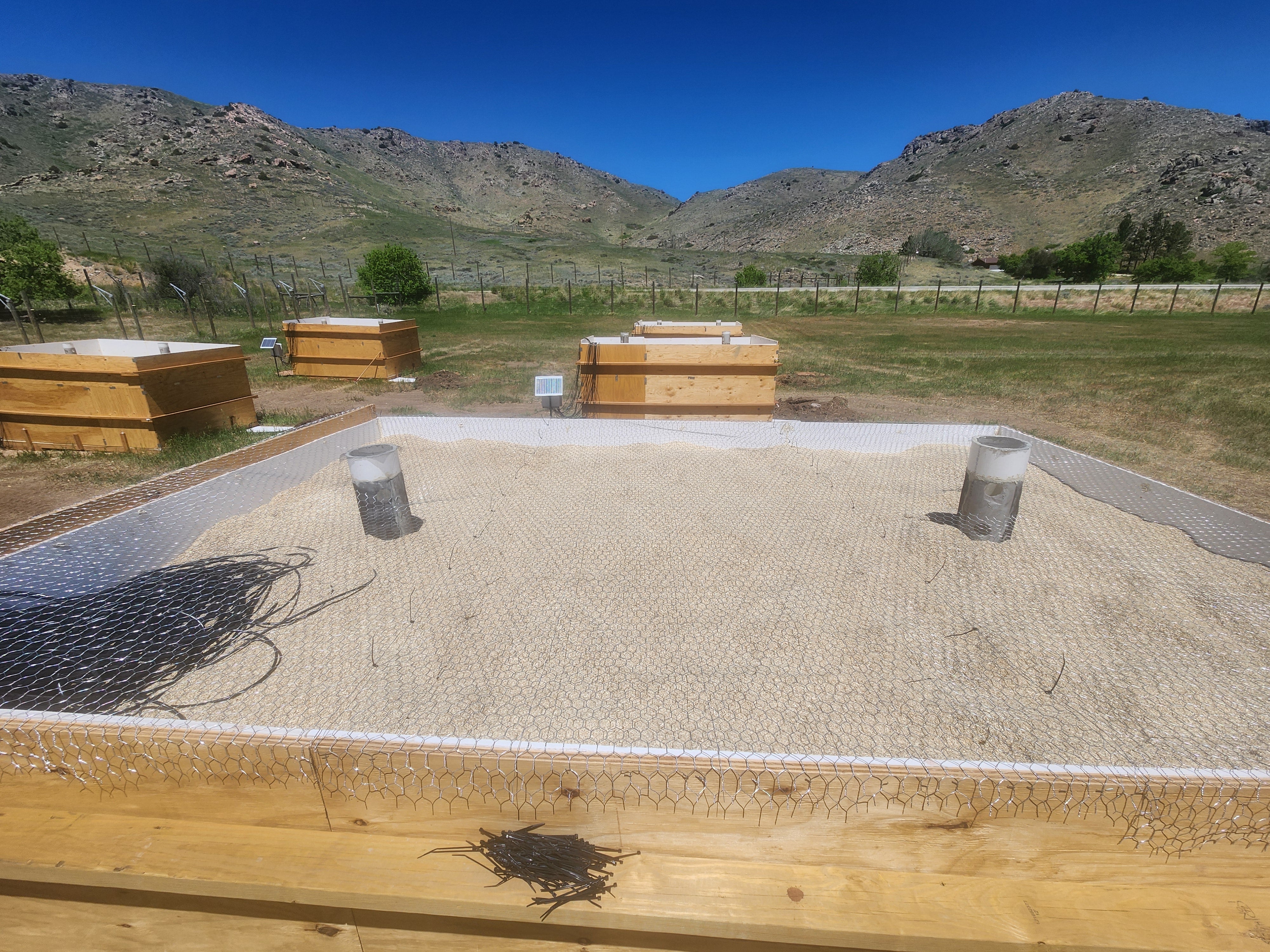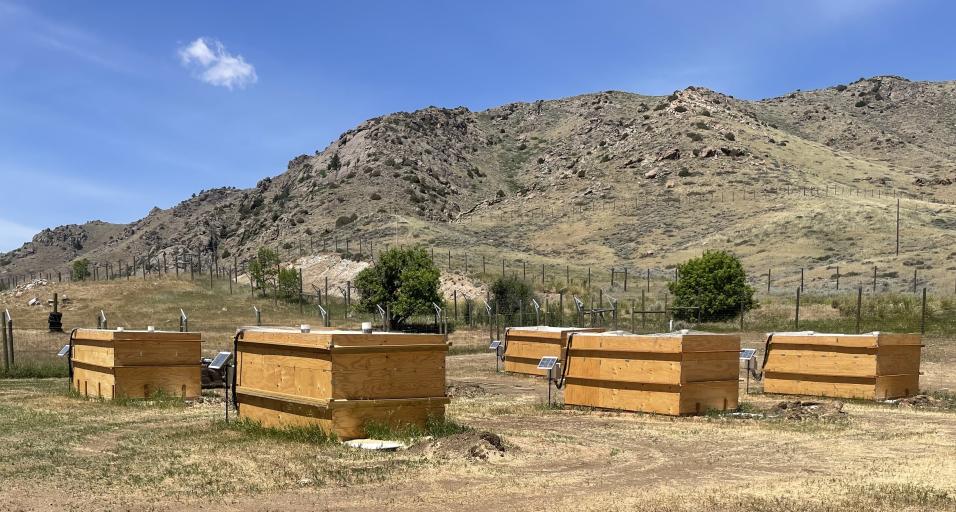If you have driven Highway 34 through Sybille Canyon recently, your attention may have been grabbed by what have been described by many as “giant coffins” outside of the Game and Fish Wildlife Research Center at Sybille. Rather than coffins, these are actually compost bins, designed to conduct research to evaluate the ability of the composting process to break down the prions that cause Chronic Wasting Disease (CWD).
CWD is a chronic, fatal disease of the central nervous system that affects deer, elk, and moose. It is caused by abnormally folded proteins called prions. Early in the disease, animals may show no clinical signs of being sick, however as the disease progresses, animals lose weight, become lethargic, and eventually die. A major challenge associated with the spread of CWD is the ability for prions to persist in the environment. This can lead to contamination of habitats for years, facilitating the spread of the disease to new individuals through ingestion of contaminated forage.
Previous research has demonstrated that CWD-infected carcasses that break down naturally in the environment contribute to habitat contamination. This led researchers at Sybille to wonder if a more robust decomposition process, through composting, could reduce the amount of CWD prions left behind when an infected animal carcass breaks down.
“Composting creates a highly alkaline environment (high pH) that can lead to intense microbial activity and high temperatures,” explains Brie Hashem, Game and Fish research biologist at the Sybille Wildlife Research Center. “Those conditions promote protein breakdown, so we think CWD prions could be degraded or eliminated through that process. We have also added certain materials into the bins that we expect to enhance the composting process. Altogether, we are hoping these bins will produce the optimal conditions for the degradation of prions from infected elk carcasses.”
Construction of the bins was completed in late May, and the composting process began in June. Some bins contain whole elk carcasses and others contain butchered waste of elk to determine whether the composting process affects those two forms differently. All bins are outfitted with temperature and moisture sensors that allow researchers to monitor composting conditions for the duration of the experiment. Hashem anticipates that the project will continue through September, when she will test the compost, soil, and any liquids produced for presence of CWD prions.
If the composting process is successful at reducing or eliminating CWD prions, it may provide another mechanism for disposal of CWD infected carcasses collected from the landscape or harvested by hunters. Current means to dispose of infected animal carcasses include incineration or landfills. If composting proves successful, additional studies could investigate the feasibility of using composting facilities as an added method to address carcass disposal.
With hunting seasons fast approaching, hunters are encouraged to educate themselves about CWD. Game and Fish will be continuing its CWD surveillance testing program to track prevalence of the disease in deer and elk herds around the state. Any hunter may submit a sample for CWD testing, and certain hunt areas are designated for enhanced monitoring or mandatory sampling this year.

Bins have open tops to allow rainfall in. Additional moisture is also expected to enhance the composting process. The black wires seen in the bottom left corner connect to temperature and moisture sensors spread throughout the bins to monitor composting conditions.



